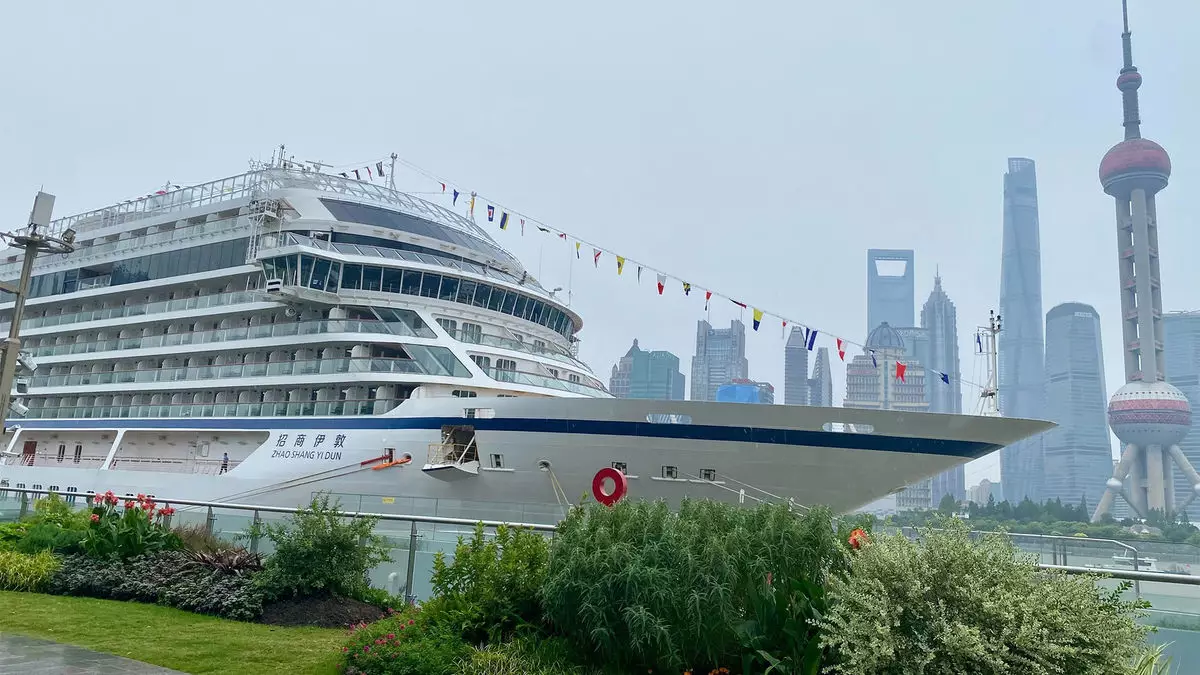The recent launch of Viking’s English-speaking ocean cruise service aboard the Yi Dun marks a significant moment in the cruise industry, particularly as it ventures into the nuanced and complex market of China. This inaugural sailing in mid-September traversed the scenic landscapes from Shanghai to Shenzhen, making notable stops at enchanting ports such as Zhoushan, Dongtou, Pingtan Island, and Xiamen. Not only did it promise to mesmerize tourists with the rich cultural tapestry of Chinese cuisine, as evidenced by delightful offerings like sweet coconut milk paired with an array of unique accompaniments, but it also positioned Viking as a savvy player in adapting to a post-pandemic travel landscape.
Given that the last time Viking sailed a ship full of English speakers in China was under the grim shadow of a pandemic, the stakes for this new venture are undoubtedly high. Still, the company’s strategic foresight is evident in the decision to create an itinerary that builds on its previous experience in the domestic cruise market, offering diverse, culturally-rich experiences while simultaneously welcoming Western visitors.
Central to Viking’s reentry into this burgeoning market is its partnership with state-owned China Merchants Group established in 2019. This collaboration facilitated the acquisition and reflagging of the Viking Sun, which is now the Yi Dun. The operational model allows the ship to visit a broader range of ports beyond the bustling major cities that are often saturated with tourists. This is vital for both attracting and accommodating the growing demand from both domestic Chinese travelers and international guests.
The exclusive access to lesser-known ports sets Viking apart from other cruise lines like Silversea and Celebrity, which predominantly operate in major tourist destinations. Such strategy not only enriches the travel experience but enhances the opportunity for Viking to create unique offerings that are difficult for competitors to replicate.
Adapting to Diverse Market Needs
However, as Viking attempts to cater to both American and Chinese markets, it faces the challenge of balancing distinctly different travel preferences. Notably, the Chinese market’s inclination toward casinos starkly contrasts with Viking’s focus on serene relaxation. Viking’s choice to forgo a casino in favor of a tranquil atmosphere with three swimming pools underscores the cruise line’s commitment to its established brand ethos, even while adapting to local preferences by including families in its underserved demographic.
Mike Estill of the Western Association of Travel Agencies pointed out that this initiative represents a unique product offering in the cruise industry. He indicated that the experiment’s success could redefine the landscape for future cruise offerings, as Viking aims to create a harmonious blend of experiences without alienating either audience.
A Cultural Melting Pot at Sea
As Viking endeavors to introduce Western travelers to the beauty of China, an intriguing aspect of the Yi Dun sailing is its dual focus on maintaining Viking’s core values while significantly embracing local culture. Guests onboard can expect familiar elements characteristic of Viking cruises, enhanced by thoughtfully curated menus that celebrate Chinese cuisine. For instance, meals range from satisfying dim sum breakfasts to street-food themed dinners that reflect the country’s culinary diversity.
Furthermore, the onboard staff, predominantly Chinese, enrich the experience with their local insights, although language barriers remain a challenge. In response, Viking has bolstered its excursion offerings with well-prepared guides fluent in English, ensuring that tours remain accessible and enjoyable. The enchanting experiences include cultural events—a blend of acrobatics and theatrical performances—immersing guests in the spiritual heritage of the regions they visit.
Yet, the road to success is fraught with hurdles—China’s slow recovery in inbound tourism post-pandemic poses a significant test for Viking. In overcoming this barrier, Viking appears to be making wise decisions to gently reintroduce Western tourists, as seen through its strategic scheduling from September to November, aligning with peak travel times in Asia.
Industry experts suggest that it will take time for the Chinese market to regain its pre-pandemic momentum, but Viking’s adaptive strategy positions it well for long-term success. There are indicators that the market’s revival will lead to increased demand for cruises that link Chinese culture with Western touring experiences.
Viking’s innovative foray into the Chinese cruise market through the Yi Dun doesn’t just symbolize a recovery from past misfortunes but serves as a pioneering effort with the potential to reshape cruise tourism in China. As the brand plans future voyages and enhances its offerings to harmonize the diverse expectations of its guests, the industry watches closely to assess whether this enterprise will be the game-changer envisioned or simply an ambitious undertaking that failed to bridge the cultural divide.


Leave a Reply